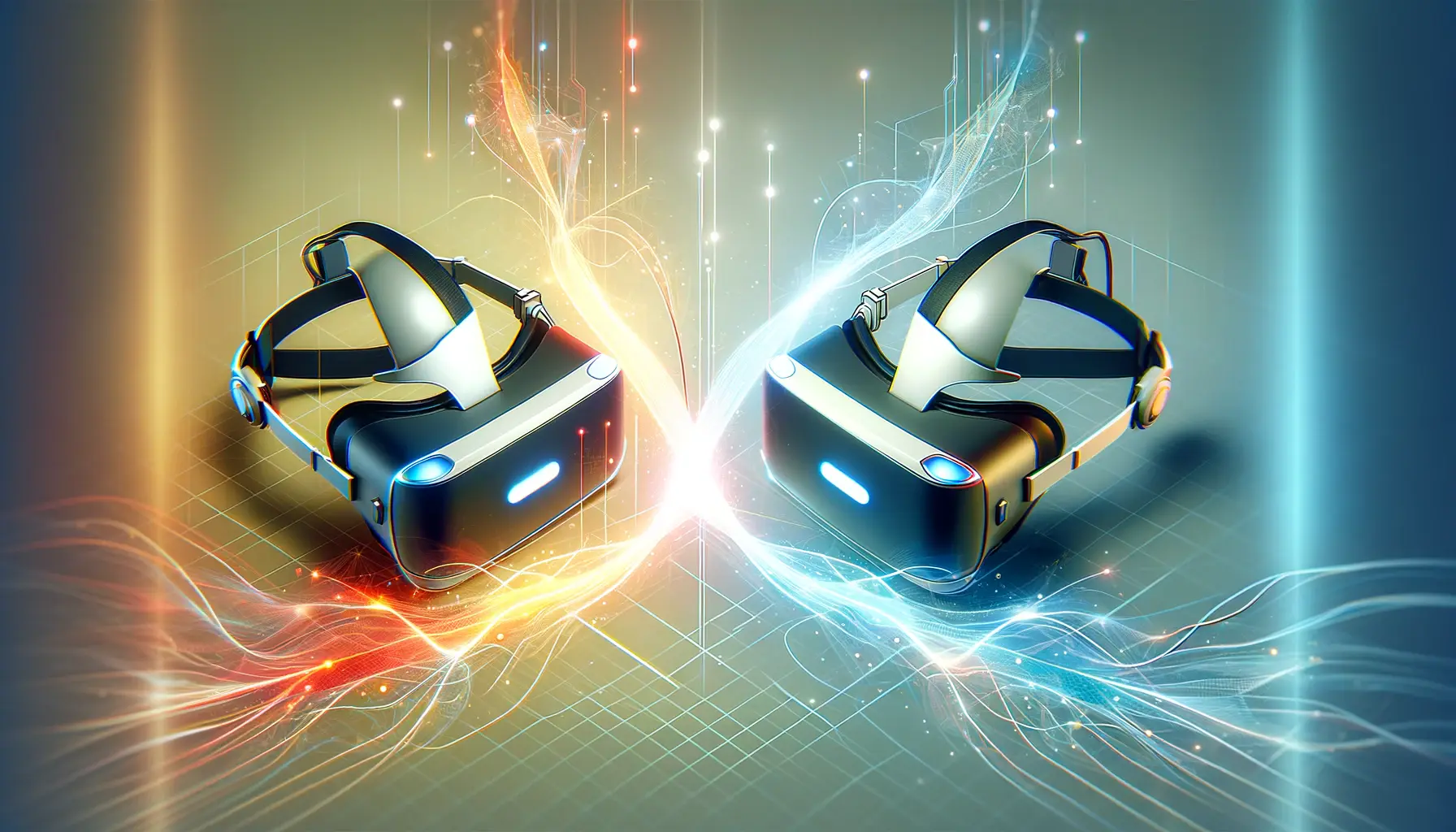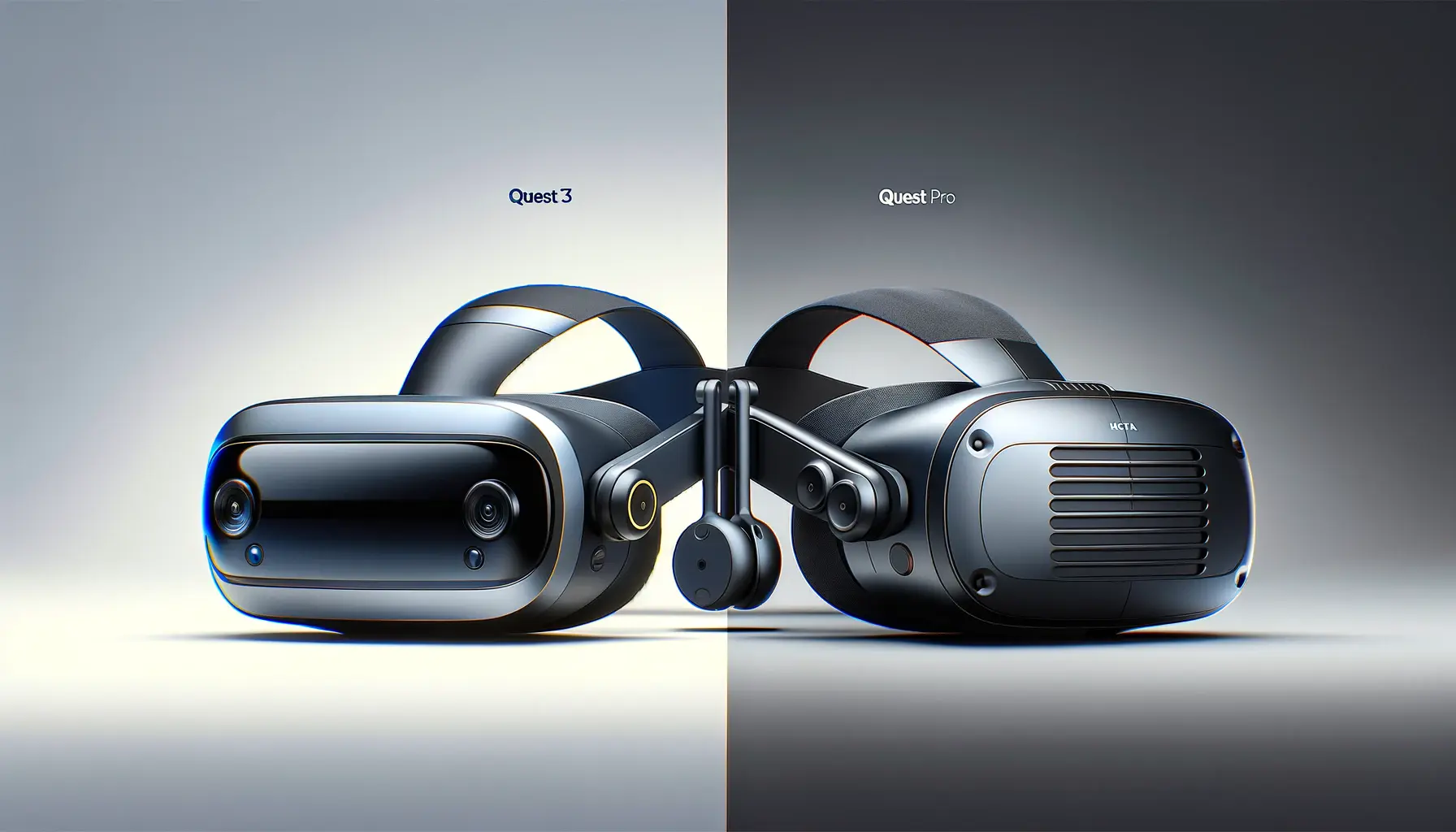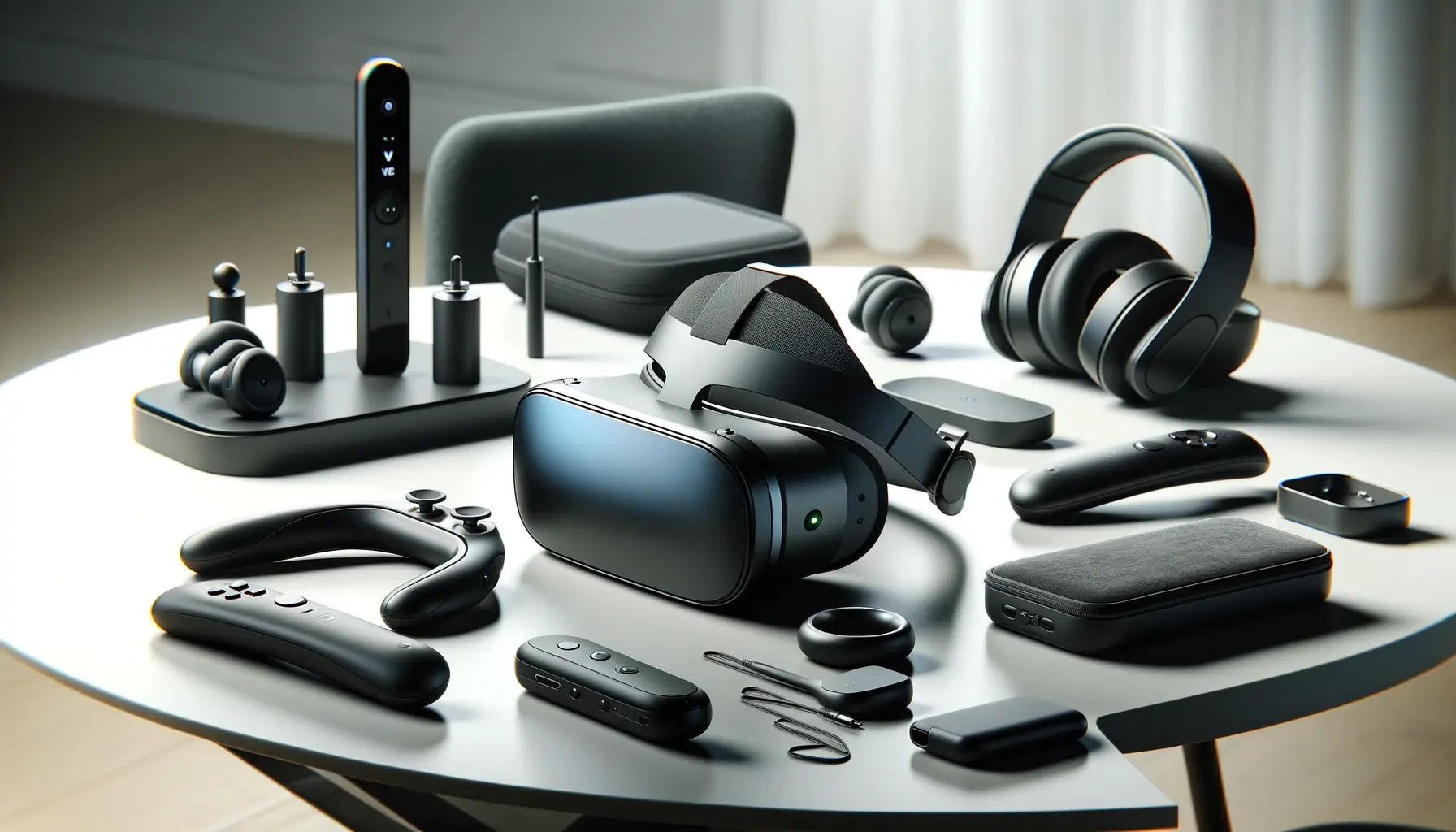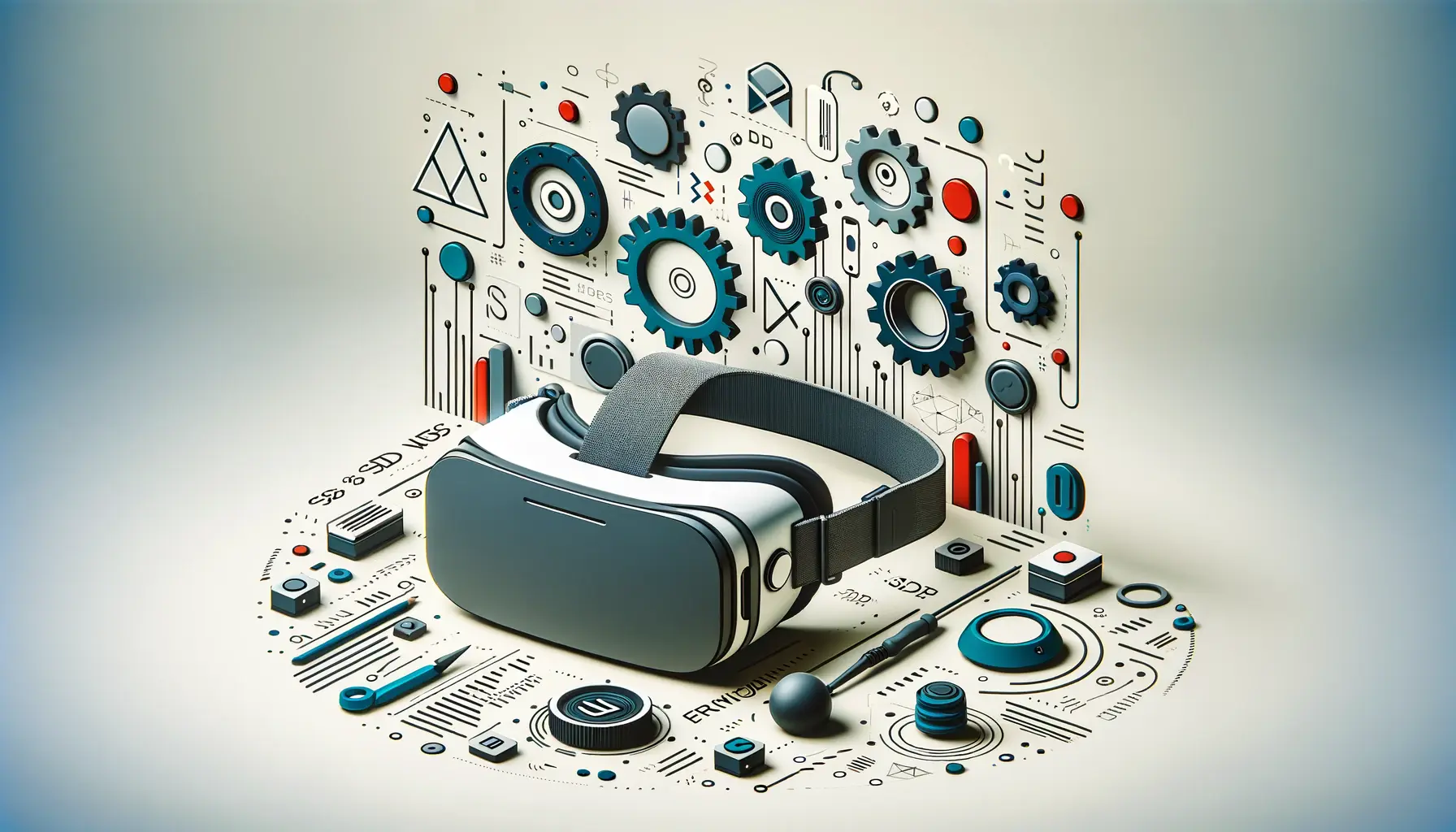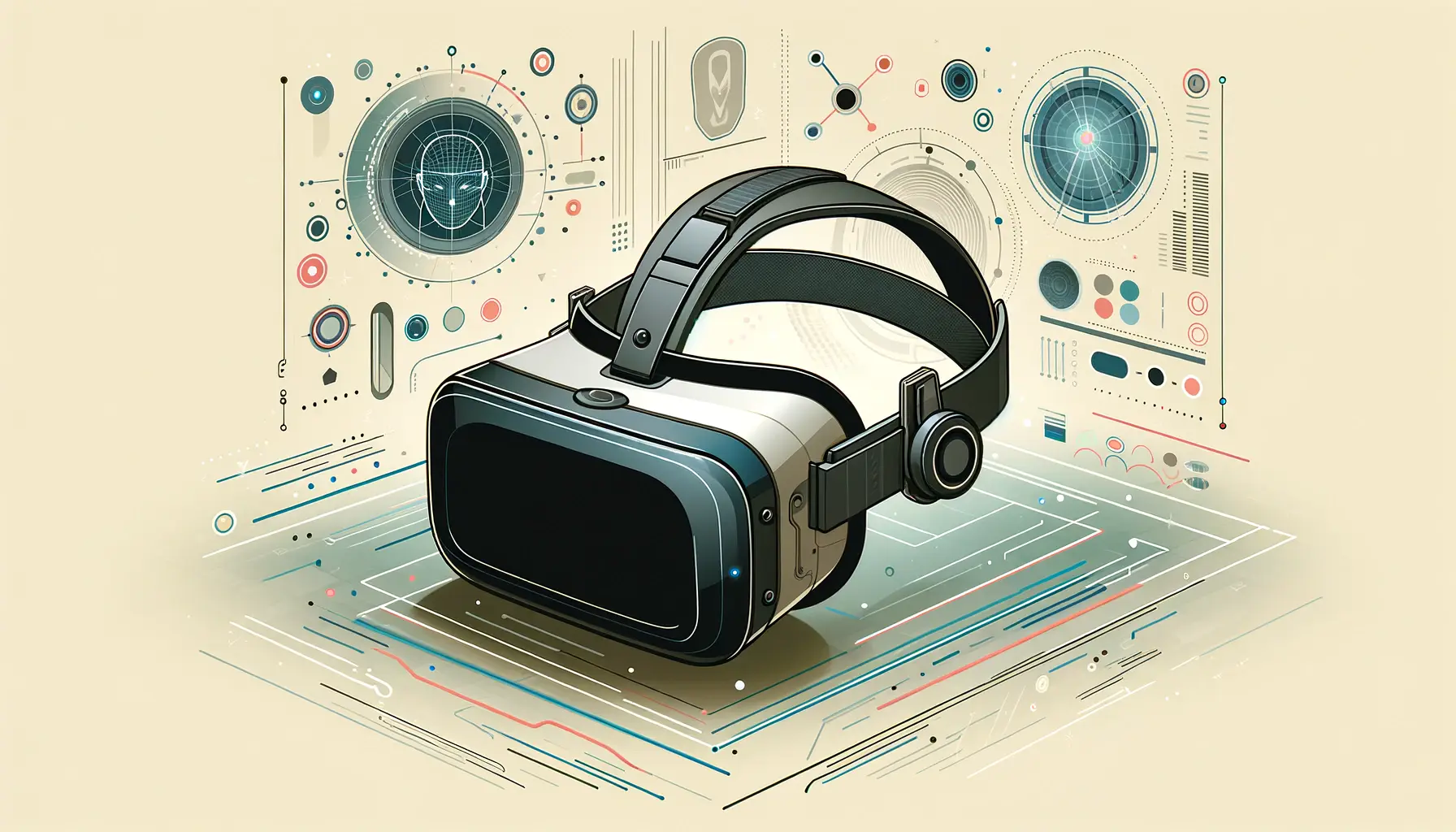The realm of virtual reality (VR) is undergoing a significant transformation, thanks in large part to the innovative strides of Meta Quest 3.
This latest iteration in the Meta Quest series is not just a leap forward in hardware and software capabilities; it’s a platform where partnerships flourish, pushing the boundaries of what’s possible in VR.
The Meta Quest 3, with its advanced features and immersive experience, serves as a beacon for developers, content creators, and businesses, signaling a new era of collaboration and creativity in the virtual space.
At the heart of this transformation are the partnerships that Meta has cultivated.
These collaborations are not merely transactional; they are deeply integrated efforts that aim to expand the VR ecosystem in unprecedented ways.
From gaming and entertainment to education and enterprise solutions, these partnerships are paving the way for a future where VR is ubiquitous, accessible, and transformative for users across the globe.
The focus on partnerships is a strategic move by Meta to ensure that the Quest 3 is not just a gadget, but a gateway to a myriad of virtual experiences, enhanced by the collective innovation of its partners.
- Understanding the Meta Quest 3 Ecosystem
- The Role of Partnerships in Content Diversification
- Enhancing User Experience Through Innovation
- Building a Community Around VR
- Advancing VR Technology Through Research and Development
- Challenges and Solutions in VR Adoption
- Future Directions for Meta Quest 3 and VR
- Embracing the Future: The Impact of Meta Quest 3 Partnerships
- Meta Quest 3 Partnerships: Essential FAQs
Understanding the Meta Quest 3 Ecosystem
The Core of Meta Quest 3’s Innovation
The Meta Quest 3 stands as a testament to the power of technological advancement in the VR industry.
At its core, the device boasts features such as high-resolution displays, intuitive controls, and a seamless integration of virtual and real-world environments.
These technical specifications are not just numbers; they represent the potential for creators to build more immersive, complex, and engaging VR experiences.
The Quest 3’s hardware and software advancements serve as the foundation upon which partnerships can thrive, offering a versatile platform for innovation.
Moreover, the emphasis on mixed reality capabilities opens new avenues for applications beyond traditional gaming.
Educational tools, virtual meetings, and even remote medical consultations become more engaging and effective with the Quest 3.
This versatility is a key factor in attracting a diverse range of partners, each bringing their unique expertise and vision to the VR table.
Expanding Through Strategic Partnerships
Meta’s approach to partnerships with the Quest 3 is multifaceted, focusing on both broadening the content library and enhancing the user experience.
By collaborating with leading game developers, film studios, and educational content creators, Meta ensures that the Quest 3 offers a rich and varied virtual world.
These partnerships are not just about content creation; they also involve technological collaborations to push the boundaries of VR hardware and software capabilities.
For instance, partnerships with chip manufacturers and software developers are crucial in optimizing the performance of VR applications on the Quest 3, ensuring that users experience smooth, high-quality VR environments.
These technical collaborations are essential for maintaining the Quest 3’s position at the forefront of VR technology, offering users an unparalleled virtual experience.
The Meta Quest 3’s ecosystem is built on a foundation of strategic partnerships, each aimed at enhancing the platform’s content, technology, and accessibility. These collaborations are pivotal in shaping the future of virtual reality, making it more immersive, versatile, and accessible to a wider audience.
The Role of Partnerships in Content Diversification
The strategic partnerships that Meta has forged for the Quest 3 are not just about enhancing the device’s technological prowess; they play a crucial role in diversifying the content available to users.
This diversification is key to attracting a broad audience, catering to varying interests from gaming and education to fitness and productivity.
Through these collaborations, Meta ensures that the Quest 3 ecosystem is rich, varied, and continually evolving.
Enriching the Gaming Experience
One of the primary focuses of the Quest 3 partnerships is the gaming sector.
By collaborating with renowned game developers, Meta has been able to bring a plethora of games to the platform, ranging from indie titles to blockbuster hits.
These partnerships not only enrich the library of available games but also push the limits of what’s possible in VR gaming, offering users experiences that are more immersive and interactive than ever before.
- Exclusive titles that leverage the Quest 3’s advanced features for unparalleled immersion.
- Collaborations with indie developers to bring innovative and diverse gaming experiences to the platform.
- Updates and expansions for existing games, keeping the content fresh and engaging for users.
Beyond Gaming: Education and Productivity
While gaming is a significant draw for the Quest 3, Meta’s partnerships extend far beyond entertainment.
Collaborations with educational institutions and software developers are transforming the Quest 3 into a tool for learning and productivity.
These partnerships are creating VR applications that offer interactive learning experiences, virtual field trips, and immersive training simulations, making education more engaging and accessible.
- Virtual classrooms and educational apps that make learning more interactive and fun.
- Training simulations for various industries, offering hands-on experience in a safe, virtual environment.
- Productivity tools that enable virtual meetings and collaborative workspaces, redefining remote work.
The breadth of content available on the Quest 3, driven by Meta’s strategic partnerships, highlights the platform’s versatility. From gaming and entertainment to education and productivity, these collaborations ensure that the Quest 3 offers something for everyone, making it a comprehensive tool for both leisure and work.
Enhancing User Experience Through Innovation
The partnerships formed around the Meta Quest 3 are pivotal in enhancing the overall user experience, a testament to Meta’s commitment to not just meet but exceed user expectations.
These collaborations are meticulously designed to leverage the strengths of each partner, bringing forth innovations that make virtual reality more intuitive, immersive, and enjoyable.
The focus is on creating a seamless interface between the user and the virtual world, ensuring that every interaction is as natural and engaging as possible.
Intuitive Controls and Interaction
One of the key areas of focus in enhancing user experience is the development of intuitive controls and interaction mechanisms.
Through partnerships with technology innovators, Meta has been able to integrate cutting-edge control systems into the Quest 3.
These systems are designed to recognize and interpret natural user movements, translating them into virtual actions with precision and ease.
This level of intuitiveness in controls significantly reduces the learning curve for new users while providing a more immersive experience for seasoned VR enthusiasts.
- Gesture recognition technologies that allow users to interact with the virtual environment using natural hand movements.
- Advanced haptic feedback systems that provide tactile sensations, enhancing the sense of immersion.
- Voice control capabilities, enabling users to navigate menus and interact with applications through spoken commands.
Immersive Visual and Audio Technologies
Another critical aspect of the user experience in VR is the quality of visual and audio presentation.
Partnerships with leading audio-visual technology companies have enabled Meta to incorporate state-of-the-art display and sound systems into the Quest 3.
These technologies are crucial for creating a truly immersive virtual environment, where users can lose themselves in the experience.
High-resolution displays ensure crisp, clear visuals, while spatial audio systems deliver sound that accurately reflects the virtual space, enhancing the realism of the VR experience.
- High-definition displays with wide color gamuts and fast refresh rates, providing smooth and vibrant visuals.
- Spatial audio technology that simulates real-world acoustics, making the virtual environment more realistic and immersive.
- Optimization of visual and audio content for the Quest 3, ensuring that applications make full use of the device’s capabilities.
The relentless pursuit of innovation through partnerships not only enhances the Meta Quest 3’s user experience but also sets new standards for what is possible in virtual reality. These advancements in controls, interaction, and sensory technologies are pivotal in making VR more accessible and enjoyable for a wider audience.
Building a Community Around VR
The success of the Meta Quest 3 extends beyond its technological advancements and into the realm of community building.
Meta understands that the future of VR lies not just in hardware and software but in the people who use it.
By fostering a vibrant, engaged community, Meta ensures that users of the Quest 3 have a platform not just for entertainment and productivity but for connection.
This focus on community is evident in the partnerships Meta has cultivated, aimed at creating a more inclusive, interactive, and supportive VR ecosystem.
Community building in the VR space involves more than just providing a platform for users to interact.
It’s about creating a sense of belonging, where users can share experiences, learn from each other, and grow together.
Meta’s approach to this has been multifaceted, involving collaborations with content creators, online forums, and social VR platforms.
These efforts are designed to encourage user interaction, content sharing, and collaboration, making the Quest 3 a hub for VR enthusiasts of all levels.
Supporting Content Creators
At the heart of the Quest 3’s community are the content creators.
These individuals and teams are the lifeblood of the VR ecosystem, bringing diverse, innovative, and engaging content to the platform.
Meta’s partnerships with content creators are designed to support and amplify their work, providing them with the tools, resources, and visibility they need to succeed.
This includes development kits, funding opportunities, and platforms for showcasing their content.
By empowering creators, Meta ensures a steady stream of fresh, high-quality content, keeping the community engaged and growing.
- Development programs and funding opportunities for VR content creators.
- Platforms for content distribution and promotion, helping creators reach a wider audience.
- Community events and competitions that encourage creativity and innovation among creators.
Encouraging User Interaction and Collaboration
Beyond supporting content creators, Meta’s partnerships also focus on facilitating user interaction and collaboration.
Social VR platforms and multiplayer games are just the beginning.
The Quest 3 ecosystem includes tools and applications designed to help users connect, share experiences, and collaborate on projects.
These features not only enhance the social aspect of VR but also open up new possibilities for learning, creativity, and teamwork.
- Social VR platforms that offer virtual spaces for users to meet, interact, and participate in shared activities.
- Multiplayer games and experiences that encourage teamwork, competition, and social interaction.
- Collaborative tools and applications that enable users to work together on creative projects or learning activities.
The emphasis on community building is a testament to Meta’s vision for the Quest 3 as more than just a VR device—it’s a platform for connection, creativity, and collaboration. By nurturing a strong, engaged community, Meta ensures that the Quest 3 remains at the forefront of the VR revolution, driven not just by technology but by the people who use it.
Advancing VR Technology Through Research and Development
The evolution of the Meta Quest 3 is significantly fueled by ongoing research and development (R&D) efforts, a cornerstone of Meta’s strategy to stay ahead in the competitive VR landscape.
These efforts are bolstered by partnerships with academic institutions, tech startups, and research organizations, all aimed at pushing the boundaries of what’s possible in virtual reality.
Through these collaborations, Meta is able to tap into a wealth of knowledge, expertise, and innovative ideas, driving the advancement of VR technology and ensuring that the Quest 3 remains at the cutting edge.
Research and development in VR encompasses a wide range of areas, from improving hardware components like displays and sensors to developing new software algorithms for better motion tracking and environment mapping.
These advancements are crucial for enhancing the performance, usability, and immersion of the Quest 3, making VR experiences more realistic and accessible to users.
By investing in R&D, Meta not only improves the Quest 3 but also contributes to the growth of the VR industry as a whole.
Pushing the Limits of Hardware Innovation
Hardware innovation is a key focus of R&D efforts for the Quest 3.
Partnerships with semiconductor companies, display manufacturers, and sensor developers play a vital role in this process.
These collaborations help Meta integrate the latest technologies into the Quest 3, such as more powerful processors for smoother performance, higher resolution displays for clearer visuals, and advanced sensors for more accurate motion tracking.
Each hardware improvement is a step towards making VR more immersive and lifelike, enhancing the overall user experience.
- Integration of cutting-edge processors to handle complex VR applications with ease.
- Development of high-resolution, fast-refresh-rate displays for crisp and fluid visuals.
- Advancements in sensor technology for precise tracking of user movements and interactions.
Software Innovations for Enhanced Immersion
Alongside hardware advancements, R&D efforts also focus on software innovations that can significantly enhance the immersion and functionality of the Quest 3.
This includes developing more sophisticated algorithms for motion tracking, environment mapping, and even AI-driven content generation.
By partnering with software development companies and academic researchers, Meta is able to incorporate these innovations into the Quest 3, offering users more realistic and interactive VR experiences.
These software advancements are essential for creating a seamless bridge between the physical and virtual worlds, making VR more intuitive and engaging for users.
- Improvements in motion tracking algorithms for smoother and more accurate user interactions.
- Advancements in environment mapping technologies, allowing for more detailed and realistic virtual spaces.
- Integration of AI and machine learning for dynamic content generation and personalized VR experiences.
The commitment to research and development is a testament to Meta’s dedication to advancing VR technology. Through strategic partnerships and continuous innovation, Meta ensures that the Quest 3 not only meets the current demands of VR users but also shapes the future of virtual reality.
Challenges and Solutions in VR Adoption
While the Meta Quest 3 represents a significant leap forward in virtual reality technology, its widespread adoption is not without challenges.
These hurdles range from hardware accessibility and affordability to user comfort and safety.
However, Meta’s proactive approach, underscored by strategic partnerships and continuous innovation, addresses these challenges head-on, paving the way for more accessible and enjoyable VR experiences for a broader audience.
Understanding these challenges is crucial for both Meta and its partners, as it informs the development of solutions that make VR more inclusive and appealing.
By tackling issues related to cost, comfort, and content, Meta aims to remove barriers to VR adoption, ensuring that the Quest 3 can reach its full potential as a transformative technology.
Improving Accessibility and Affordability
One of the primary barriers to VR adoption is the cost and accessibility of the hardware.
The Quest 3, with its advanced features, represents a significant investment for many users.
To address this, Meta has implemented strategies to make the device more affordable and accessible.
This includes offering various pricing options, bundling games and apps at discounted rates, and partnering with retailers for special promotions.
Additionally, Meta works with developers to ensure a steady stream of content that can run efficiently on lower-end hardware, making VR more accessible to those with budget constraints.
- Flexible pricing and bundle options to make the Quest 3 more accessible to a wider audience.
- Partnerships with retailers for promotions and discounts, reducing the upfront cost of VR adoption.
- Optimization of VR content for lower-end hardware, ensuring a broader range of users can enjoy high-quality VR experiences.
Enhancing User Comfort and Safety
User comfort and safety are also critical factors in the adoption of VR technology.
Prolonged use of VR headsets can lead to discomfort or even health issues for some users.
To combat this, Meta has focused on designing the Quest 3 with ergonomics in mind, ensuring that the headset is lightweight, adjustable, and comfortable for extended use.
Furthermore, Meta invests in research to understand and mitigate the potential health impacts of VR, developing features like adjustable interpupillary distance (IPD), blue light filters, and software that encourages regular breaks.
- Design improvements for increased comfort, including adjustable straps and lighter materials.
- Features to mitigate health risks, such as blue light filters and software reminders to take breaks.
- Continuous research into the long-term effects of VR use, informing future design and safety features.
The challenges of VR adoption are significant, but they are not insurmountable. Through strategic partnerships, innovative solutions, and a commitment to user comfort and safety, Meta is making great strides in making VR technology like the Quest 3 more accessible, affordable, and enjoyable for users worldwide.
Future Directions for Meta Quest 3 and VR
The journey of the Meta Quest 3 is a vivid illustration of the dynamic and evolving nature of virtual reality technology.
As Meta continues to push the boundaries of what’s possible in VR, the future directions for the Quest 3 and the broader VR landscape are both exciting and ambitious.
These future initiatives are not just about enhancing hardware and software but also about deepening the integration of VR into everyday life, making virtual experiences more seamless, realistic, and accessible to a global audience.
Meta’s vision for the future of VR encompasses a wide range of developments, from technological advancements to broader societal integration.
This vision is supported by ongoing research, strategic partnerships, and a commitment to creating an inclusive and immersive virtual world.
As VR technology becomes more advanced and widespread, its potential applications expand, offering new opportunities for entertainment, education, work, and social interaction.
Technological Advancements and Integration
Looking ahead, Meta is focused on further improving the Quest 3’s hardware and software, making VR experiences even more immersive and lifelike.
This includes advancements in display technology, motion tracking, and haptic feedback, as well as the development of more sophisticated AI algorithms for personalized and dynamic content creation.
Additionally, Meta aims to enhance the integration of VR with other technologies, such as augmented reality (AR) and the Internet of Things (IoT), creating a more interconnected and versatile digital ecosystem.
- Development of next-generation displays with higher resolutions and wider field of view.
- Advancements in haptic technology, providing more nuanced and realistic tactile feedback.
- Integration of VR with AR and IoT, enabling new forms of interaction and functionality.
Expanding the Role of VR in Society
Beyond technological improvements, Meta envisions a future where VR plays a more integral role in society.
This includes expanding the use of VR in education, allowing students to explore virtual worlds and conduct experiments in ways that were previously impossible.
In the workplace, VR can facilitate remote collaboration and training, making it a valuable tool for businesses.
Additionally, Meta sees a future where VR contributes to social well-being, offering new ways for people to connect, share experiences, and support each other, regardless of physical distance.
- Enhanced VR applications for education, providing immersive learning experiences.
- Use of VR for remote work and collaboration, transforming the traditional workplace.
- Development of social VR platforms, fostering community and connection among users.
The future of the Meta Quest 3 and virtual reality is a testament to the limitless potential of this technology. As Meta continues to innovate and expand the VR ecosystem, the possibilities for how we learn, work, play, and connect are reimagined, promising a future where virtual experiences are an integral part of our daily lives.
Embracing the Future: The Impact of Meta Quest 3 Partnerships
The journey through the evolving landscape of virtual reality, led by the innovations of Meta Quest 3, underscores a pivotal shift in how we perceive, interact with, and benefit from digital environments.
The strategic partnerships that Meta has cultivated serve not only as a testament to the company’s commitment to advancing VR technology but also highlight the collaborative spirit driving the industry forward.
These alliances, spanning across various sectors, have been instrumental in expanding the VR ecosystem, making it more accessible, immersive, and versatile than ever before.
The Synergy of Collaboration
At the core of Meta Quest 3’s success are the partnerships that have broadened the scope of VR applications, transcending traditional boundaries of gaming to encompass education, work, and social connectivity.
These collaborations have not only enriched the content available on the Quest 3 platform but have also paved the way for innovations that enhance user experience, making VR more intuitive and engaging.
The synergy between Meta and its partners exemplifies the power of collaboration in pushing the limits of technology, creating a vibrant and dynamic VR landscape.
Charting the Path Forward
Looking ahead, the future of Meta Quest 3 and virtual reality is bright, with ongoing research and development efforts promising even more groundbreaking advancements.
The focus on creating a seamless, integrated digital ecosystem, where VR intersects with augmented reality and the Internet of Things, points to a future where virtual experiences are an integral part of everyday life.
As VR technology continues to evolve, its potential to transform education, work, and social interactions is limitless, offering exciting possibilities for immersive learning, remote collaboration, and community building.
- The continued emphasis on accessibility and affordability, ensuring that VR technology can reach a wider audience.
- Advancements in hardware and software that push the boundaries of immersion and realism in virtual experiences.
- The expansion of VR’s role in society, from education and work to social well-being and connectivity.
In conclusion, the Meta Quest 3’s journey through innovation and partnership is a beacon for the future of virtual reality.
By fostering a collaborative ecosystem, Meta not only enhances the capabilities and reach of the Quest 3 but also sets the stage for a future where VR is woven into the fabric of our daily lives.
As we stand on the brink of this new digital frontier, the partnerships and technologies driving the Meta Quest 3 forward are not just shaping the future of virtual reality; they are redefining the possibilities of digital interaction and connectivity for generations to come.
Meta Quest 3 Partnerships: Essential FAQs
Explore the most common inquiries surrounding the partnerships that shape the Meta Quest 3 experience.
Meta Quest 3’s key partnerships include collaborations with leading game developers, educational institutions, and technology innovators to enhance VR experiences.
Partnerships expand Meta Quest 3’s content library with diverse games, educational tools, and productivity applications, enriching user experience.
Yes, partnerships aim to make VR more accessible by optimizing content for various hardware capabilities and offering bundled deals.
Partnerships drive innovation in Meta Quest 3 by introducing advanced features and technologies for an improved VR experience.
Yes, Meta Quest 3 has partnerships with educational platforms to provide immersive learning experiences through VR.
Partnerships enhance user experience by integrating intuitive controls, immersive content, and social features into the Meta Quest 3.
Meta plans to expand Quest 3 partnerships in areas like augmented reality, IoT, and more to further integrate VR into daily life.
Users benefit from a richer content library, enhanced features, and a more immersive VR experience thanks to Meta Quest 3 partnerships.
